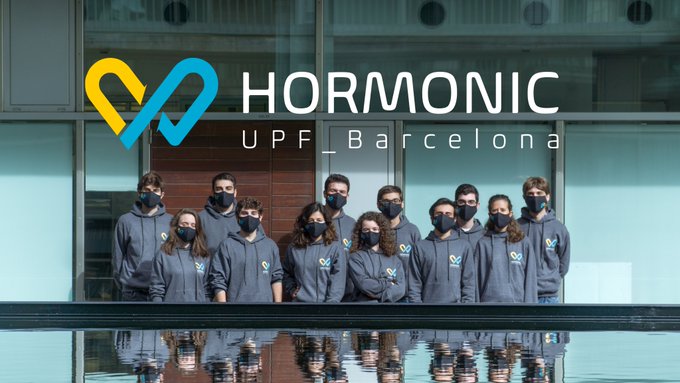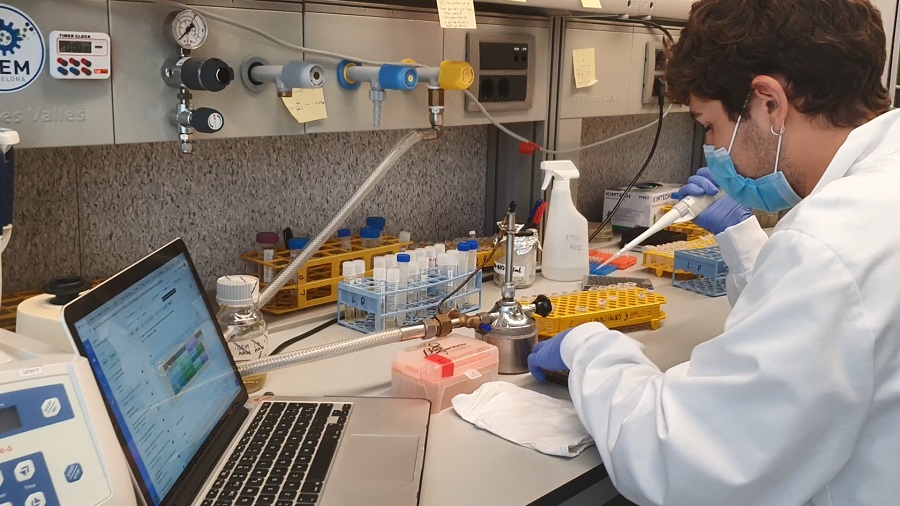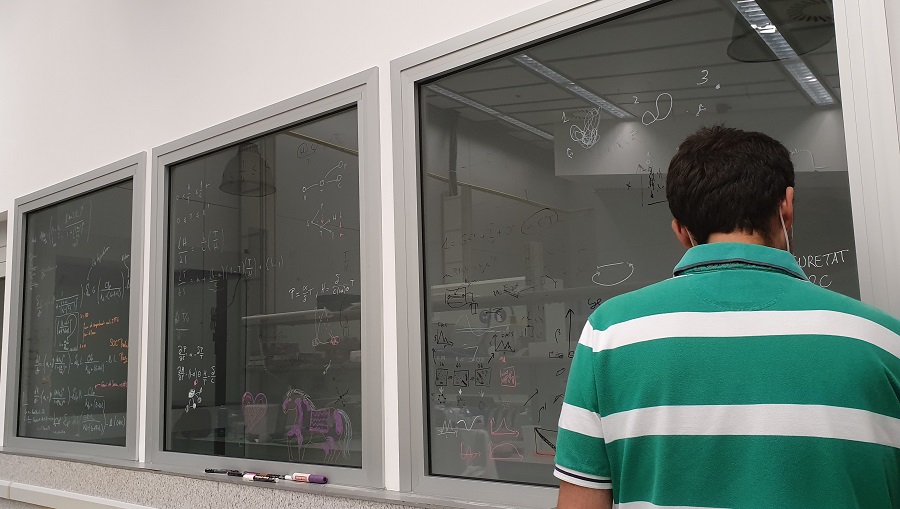“In the Hormonic project, we address a complex problem by combining electronics and synthetic biology”
“In the Hormonic project, we address a complex problem by combining electronics and synthetic biology”
“In the Hormonic project, we address a complex problem by combining electronics and synthetic biology”
The team of students from the bachelor’s degree in Biomedical Engineering at UPF entered their project for the iGEM international synthetic biology competition. Hormonic, seeks to achieve an artificial balance of the thyroid hormone, detecting and regulating the amount present as the body itself does.

The iGEM Barcelona team, comprising of UPF Biomedical Engineering students, presented their project Hormonic at the international synthetic biology competition iGEM (International Genetically Engineered Machine).
The project, which deals with treating hypothyroidism, has won them a gold medal in recognition of excellence in several areas. They have also earned recognition for best “wiki” (the web page where they present all their work) and best “basic part” (a unit of functional DNA that can be used by the iGEM community to create new devices), and have been nominated for best therapeutic project, poster and presentation video.
The group is supported by the UPF Board of Trustees and the Departments of Experimental and Health Sciences (DCEXS) and of Information and Communication Technologies (DTIC).
—How did the idea for the project arise?
We considered different ideas and in the end we wanted to respond to hypothyroidism because it is a problem close to us as we have friends and family with this disease. We believe that complex problems are best addressed from different fields at the same time. Hence our project includes different angles, combining electronics and synthetic biology.
We aim to regulate the hormonal cycle and provide personalized treatment for each individual.
—Can you explain what your device consists of?
The disease is caused by hormonal cycle dysregulation. We aim to regulate this cycle and provide personalized treatment for each individual. We wanted to take advantage of the ability of biology to measure certain molecules while electronics enables quickly and accurately calculating what dose is required. The sensor is a bacteria that we have modified so that it can determine hormone level and, depending on the amount detected, it emits fluorescence. Fluorescence can be quantified through a photodiode, an electronic system. And this system sends the information to a computer that can perform the calculations, and if hormone levels are low, administer the synthetic hormone.
—How would you assess your experience at the Jamboree, held online this year?
It is a pity not to have gone to Boston but the experience was great. There were lots of activities during the week: seminars, question and answer sessions, poster presentations, the big closing ceremony and also more relaxed activities. It allowed us to interact with other teams, see what their projects are all about and how they are trying to solve local problems. It helped us to form a community and meet people who have lived the same experience as us.
We wanted to respond to hypothyroidism because it is a problem close to us as we have friends and family with this disease.
—What would you highlight about what you have learned?
Not only have we learned about the scientific part and laboratory work, we have carried out the entire research project process, from an idea to making a final prototype. This has involved managing spaces and a budget, planning all tasks, solving the problems that have arisen and trying to make the project meaningful in the clinical sphere. We also had to present our project: we have made videos and podcasts to try to make the scientific content accessible to the general public.

—What are the main challenges for developing your project in the context of a pandemic?
We struggled to get access to the lab due to the pandemic, its limited capacity meant that we couldn’t all go there, so we had to distribute the tasks really well, so good organization was essential. During the process we had problems, but we are very happy with the result.
—How do you see the future of your project?
Hopeful. The University Board of Trustees funded our project, and due to the good results we have had in the competition, they have informed us that we can continue working on it. We had already planned some experiments to improve the project, starting in January we will continue to investigate in order to publish.
Having the resources to carry out a project that we ourselves chose is a unique opportunity.
—What would you advise to students who wish to go in for forthcoming editions of the competition?
Having the resources to carry out a project that we ourselves chose is a unique opportunity, I would say to make the most of it and enjoy to the fullest. We have managed to form a team with people who are highly motivated by the same issue and this has been fantastic.
We would advise them to keep an open mind and be ready to learn different skills required for the competition, such as a web programming. Also, to be prepared for frustration, as things don’t always turn out right. Most importantly, they must be well organized and have good team communication. So, they should plan tasks well in advance, as there are many deliveries and dates should be duly kept in mind.

